The Ultimate Guide to Ofu Island, American Samoa
5 Comments
https://www.terragalleria.com/blog/the-ultimate-guide-to-ofu-island-american-samoa
As the crown jewel of the National Park of American Samoa, Ofu Island is the tropical beach paradise many travelers dream about. However, there is little information about Ofu, most of it incomplete, outdated, or wrong. Based on insider information I acquired during two visits to Ofu, I remedy this situation and provide tips not found anywhere else for visiting Ofu.
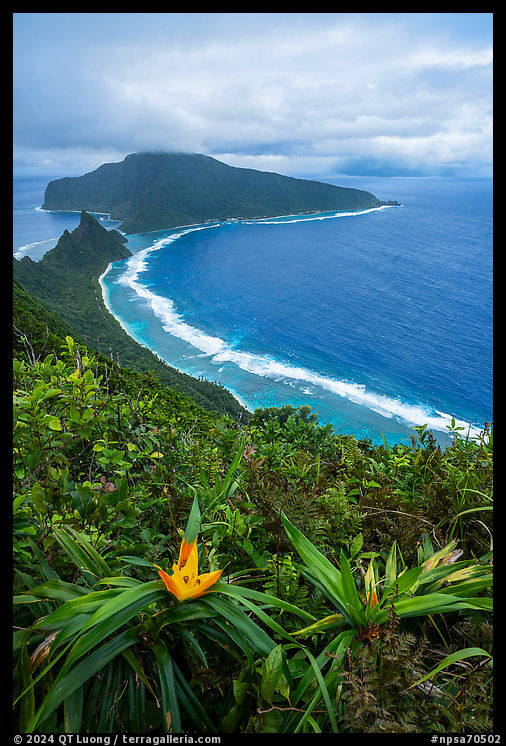
1. Where is Ofu and why should I go?
Ofu Island is a remote island in the South Pacific, part of American Samoa. Few people would be able to even locate American Samoa on a map, so here you are, courtesy of the National Park Service (NPS):
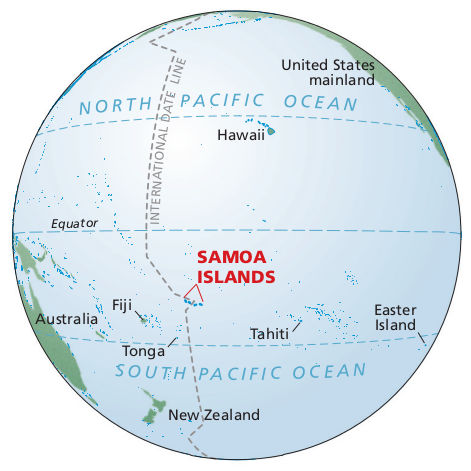
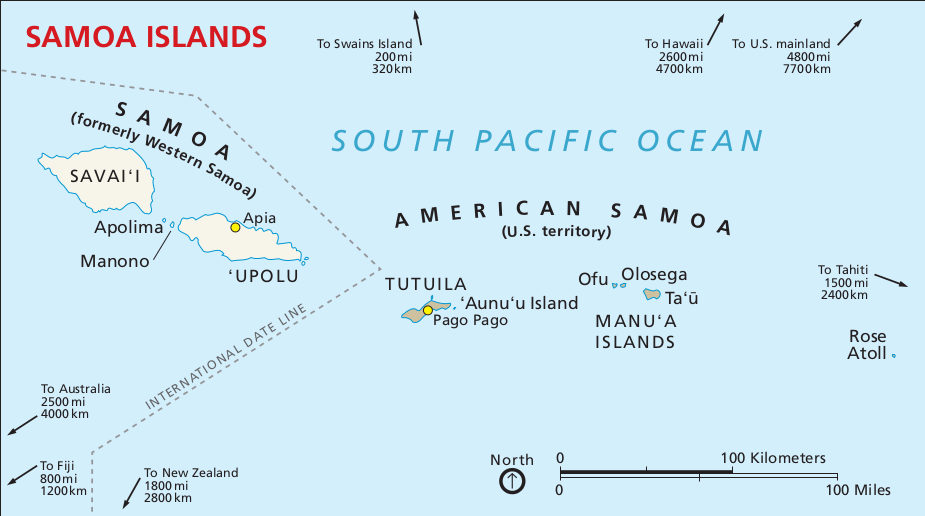
American Samoa is a great place to visit if you like your destination out of the beaten path and unaffected by mass tourism, yet with the familiarity of a U.S. territory where English is an official language. With lush and dramatic mountains surrounded by beaches and coral reefs, the islands are rich in natural beauty. The friendly islanders perpetuate a distinctive Samoan culture. Despite all of this, my impression is that hardly anyone travels for leisure to American Samoa without an interest in visiting the National Park of American Samoa, often in a quest to visit all U.S. national parks. The park comprises three units, each located on a different island of American Samoa: Tuitula, Ta’u, and Ofu. The latter two are part of the group of Manu’a islands, sixty miles away from Tuituila, which is the main island of American Samoa.
All travelers who have visited the three units of the National Park of American Samoa agree that Ofu is the most beautiful and provides a much better experience than Tuitula, fulfilling imaginations of visiting a South Pacific beach paradise. If you thought Tuitula Island was lightly developed and slow moving, wait until the Manu’a Islands. On Ofu Island, you will feel immersed in the timeless South Pacific of old, where only a few cars per day disturb the natural beauty. About 60,000 live on Tuitula Island, but only about 150 on Ofu Island. With only a few hundred visitors there each year, you may have the world-class beach, one of the healthiest and most vibrant coral reefs anywhere with outstanding snorkeling, and great trail by yourself. A visit to Ofu is an unforgettable adventure and getaway.
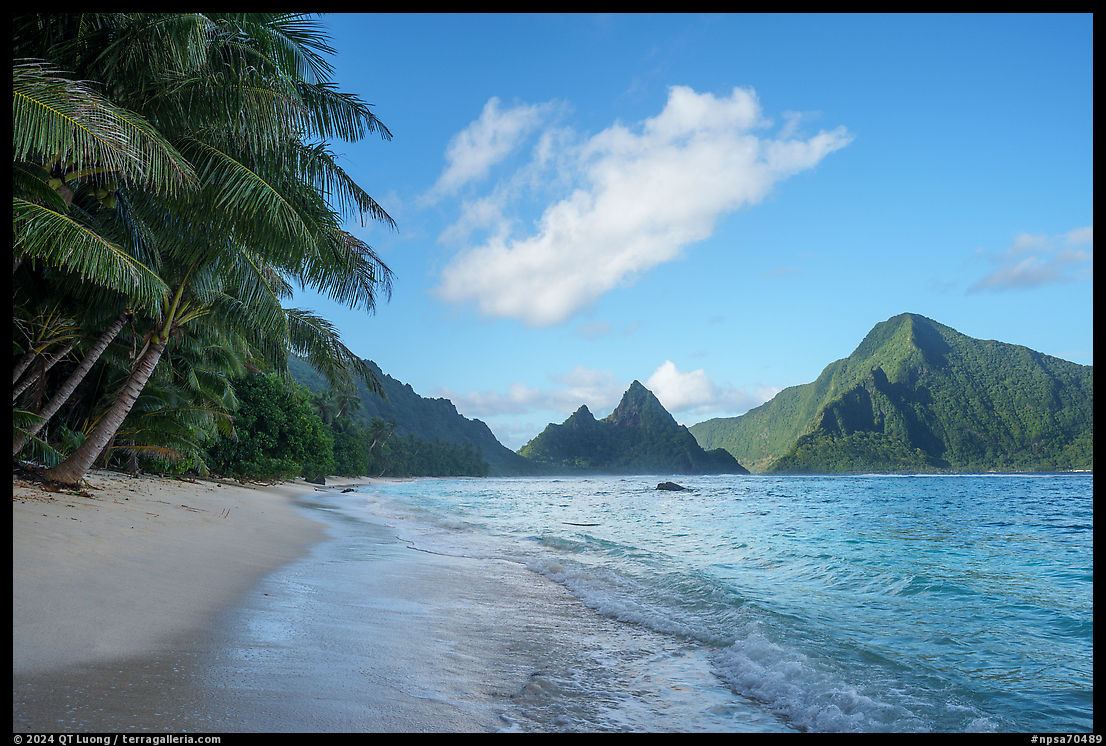
2. When to go
By mainlanders’ standards, there is a perpetual summer weather in American Samoa. Since the islands are 14 degrees south of the equator, a tropical equatorial climate prevails with warm and humid weather year-round, and day and night temperatures ranging from 80°F to 90°F. That climate can feel a bit oppressive to mainlanders. The austral winter, May to October, is slightly cooler and drier, with fewer tropical storms although it may still rain every day. It is the most comfortable and safe period.November to April is the rainy season and also cyclone season. Cyclones are the same thing as hurricanes and typhoons, the correct name depends on the part of the world where they originate from. On average, they happen about once per year. On the other hand, during that period, the trade winds also die down so there is little breeze to cool you down. The main positive is that the seas are often calmer.
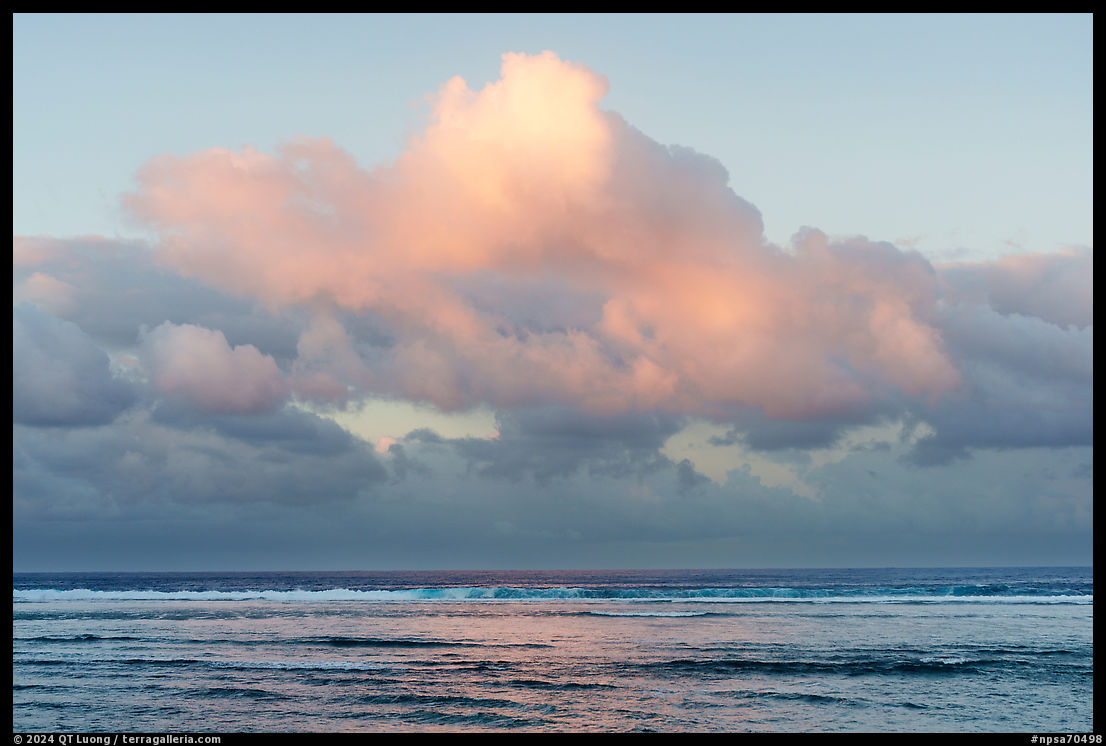
3. How to get there
The reason why Ofu sees so few visitors is that getting there has been challenging. I will therefore provide plenty of details in this section. To reach Ofu, you have first to fly to Pago-Pago (PPG), which is the only international airport in American Samoa, a topic briefly discussed here. From there, the three options are: fly from Pago-Pago to Ofu, fly to Ta’u and ride a alia boat to Ofu, sail from Pago-Pago to Ofu with the cargo ship.3.1 Flying to Ofu
As of this writing (July 2024), the first option is the clear and easy choice, but its availability was not always a given. Samoa Airways is the only commercial airline that currently flies to Ofu. Even when the flights were available, getting on them was a struggle because the airline website did not offer online bookings, emails were rarely replied to, and you needed luck to be able to speak with someone from their office by phone – in June 2024, I called them eight times without success. In 2002, I could book a flight only because spending an extended amount of days on Tuitula, I used word of mouth and interpersonal contacts, which is still the best way to get anything done in American Samoa. Since then, I’ve read of travelers having success with a local travel agency. The airline did not even take credit cards. Travelers such as this writer for AJC or my friend Tommy have found that the only way to get tickets in advance was to have them bought via Deb from Va’oto Lodge who has a friend working near their office. This changed on April 18, 2024, when Samoa Airways activated a new website, which now works like any normal airline reservation system, making it possible to book your flight online. Even though hopefully the days of difficult travel planning to Ofu may be over, travel itself is never a sure thing there. Bad weather will still cause a flight to be canceled. Even if the plane is on the way to the island, a tropical squall at landing time may cause it to turn around to Pago Pago. In the past, the plane was often broken down, and locals, particularly chiefs, sometimes prioritized over reservation holders. Given the lack of reliability of the flights, I strongly advise building flexibility. In particular, if you have an event that you don’t want to miss, such as your international flight out of Pago-Pago, you should not try to fly out of Ofu on the same day. An additional buffer day would be prudent.When the schedule is followed, Samoa Airways flies twice per week from Pago-Pago to Ofu, on Tuesdays and Thursdays mornings. This gives the option to stay two or five days on Ofu. The latter would be my recommendation. If flying to Pago-Pago on Hawaiian Airlines, your itinerary would be: Pago-Pago on Monday, Ofu from Thursday to Tuesday, Honolulu on Wednesday or Thursday. Although Samoa Airways uses Pago-Pago International Airport, the procedures are similar to a general aviation flight: no call, TSA formalities, or seat assignments. The planes are Twin Otters with a pilot and co-pilot, seating 14 passengers. Each row has three seats, two on the right side and a single seat on the left side, separated by a narrow aisle. There are no overhead bins, so any carry-on luggage that doesn’t fit under a seat is stacked in the back of the cabin. The left side has the best views shortly after take off from Pago-Pago or Ofu. The flight takes an hour and 15 minutes and costs $155 each way. With all my gear, I was worried that the terms of carriage allowed only for one 5 kgs (11 lbs) piece of carry-on and one 15 kgs (33 lbs) piece of checked-in luggage. In practice, the agent makes you stand on a scale while holding your carry-on luggage, so if like me you have a lighter build, you will be fine even with heavy carry-on luggage. That fair practice that I wish was adopted by more airlines was probably inspired by Samoa Air, the first airline in the world to charge by weight of body plus luggage. For my overweight checked luggage, all I had to do was pay an extra $25. However, a Samoan person told me their baggage was not loaded because the airline had oversold the plane. Since that was in 2016, it meant no luggage for a week, as we’ll see next. Be sure to carry with you all the essentials! Here is Samoa Airways website.
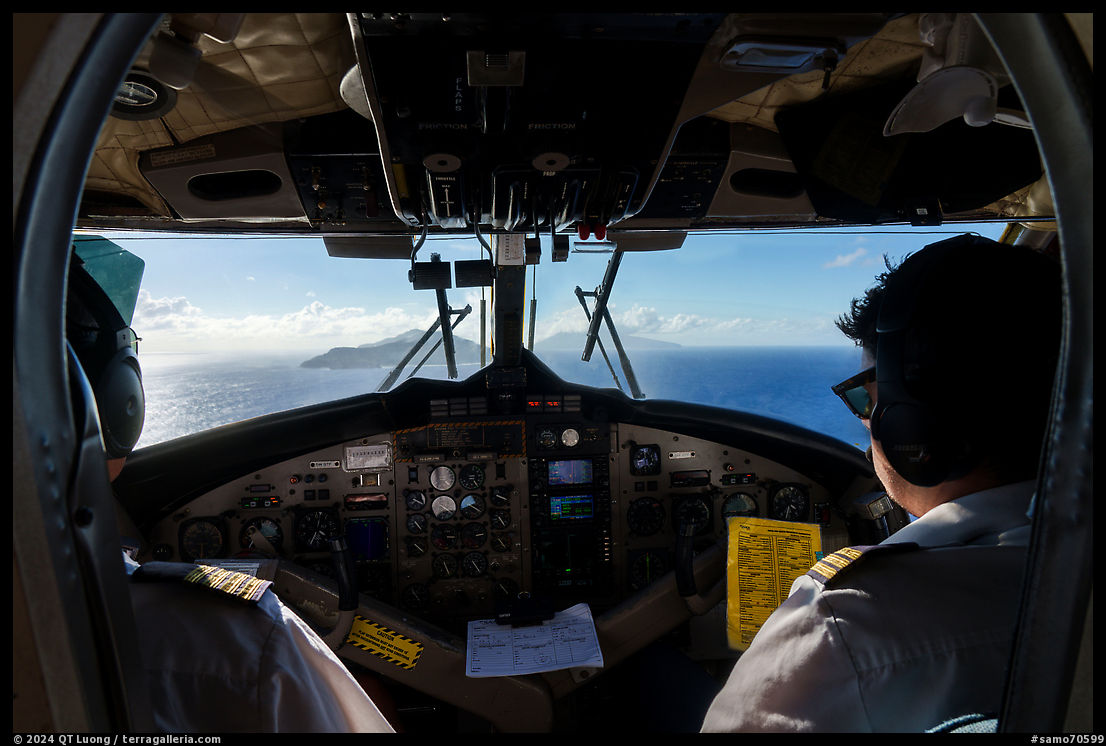
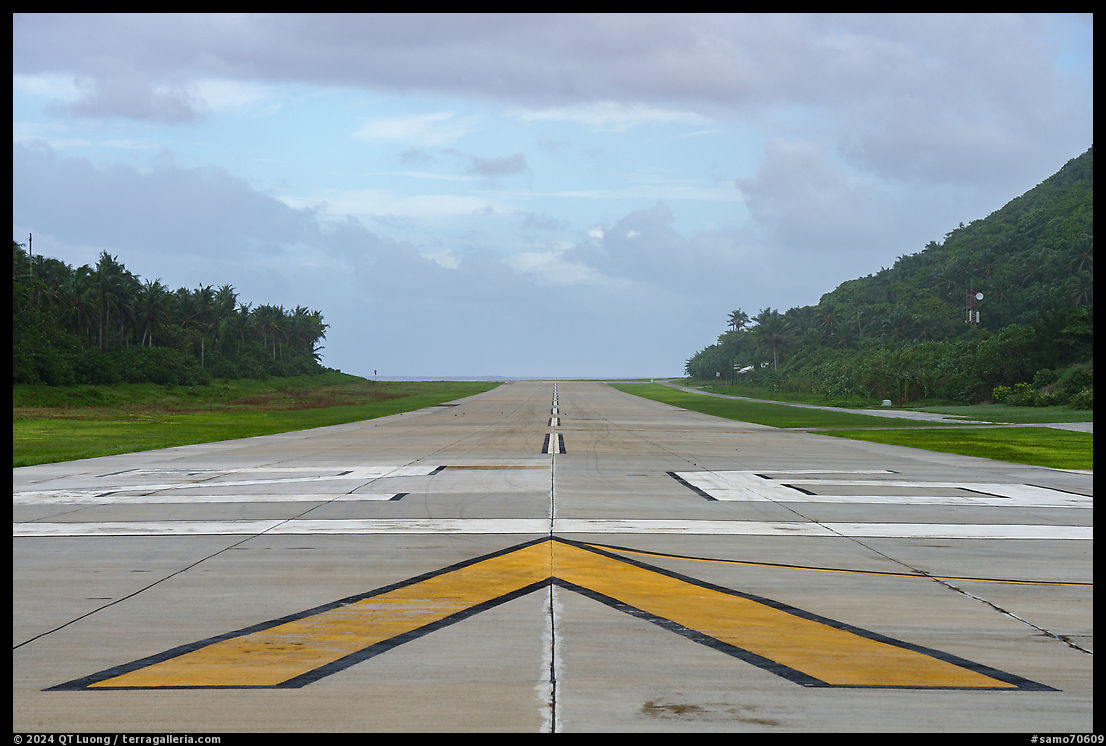
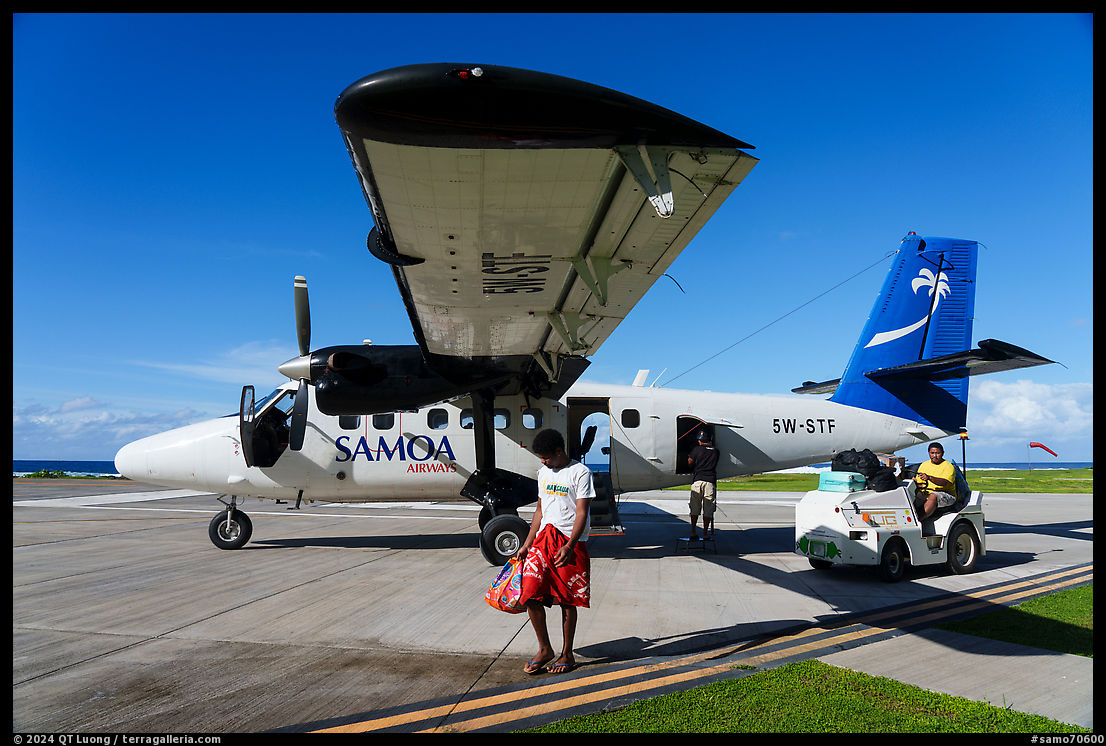
3.2 Flying to Ta’u
When I visited Ofu in 2002, the convenient PPG-Tau-Ofu-PPG was a standard route. Nowadays, there are no flights between Ta’u and Ofu, so if you want to visit both islands by air, you need to fly PPG-Ofu-PPG and PPG-Tau-PPG. Since Ofu Island and Ta’u Island are only eight miles apart, it seems natural to try to cross from one island to the other by boat. For a while, this was the preferred option to reach Ofu, especially from 2009 to December 2014, when there were no flights to Ofu. As of June 2024, the National Park Service’s “Directions and Transportation” page still states incorrectlySmall planes serve park areas on Ta’u Island and the nearby nation of Samoa. Transportation to the other park area on Ofu Island is by local boat from Ta’u.I’ll explain the reason for that situation so that you can appreciate the present-day status. Starting from 1987, Samoa Air (based in Pago-Pago) operated frequent flights to the Manu’a Islands. However, the owner sold the airline without disclosing that his Twin Engine Otters were nearing their inspection limits. The new owner couldn’t afford the expensive frame inspections, so he reduced the number of flights to extend the aircraft’s life. With fewer flights and less revenue, the leased aircraft were eventually forfeited, and Samoa Air went out of business in 2003. Subsequently, Inter Island Air picked up service to the Manu’a Islands. However, their Dornier 228-212 aircraft were not adapted to the short runway on Ofu. When for cost savings they replaced pilots contracted from a Las Vegas company with a team of young and inexperienced pilots, landing on Ofu became too much trouble and they discontinued service there. As the Ta’u airport (in Fitiuta) is much larger than the Ofu airport and Ta’u is the more populated of the Manu’a Islands, service to Ta’u continued until 2013, when an aircraft broke down. In 2014, Polynesian Air came to the rescue with four weekly flights to Ta’u and one weekly flight to Ofu, on Thursday. This made it necessary to stay in Ofu for a week unless you were willing to cross to Ta’u by boat, which many did. If you got the impression that air service was not very stable, it is because it was (and still is) a month-to-month operation. Polynesian Air, being based in Independent Samoa is a foreign flag carrier. Because of restrictions imposed on non-U.S.-flagged transport between U.S. destinations, they had to get special permission each month to operate in American Samoa. During the COVID pandemic travel to and within American Samoa was heavily limited, but when tourism resumed in 2022, Polynesian Airlines, now controversially renamed Samoa Airways, had switched the destination of the Tuesday flight from Ta’u to Ofu, so as of 2024 flights from PPG to Ta’u take place on Monday, Wednesday, and Friday.
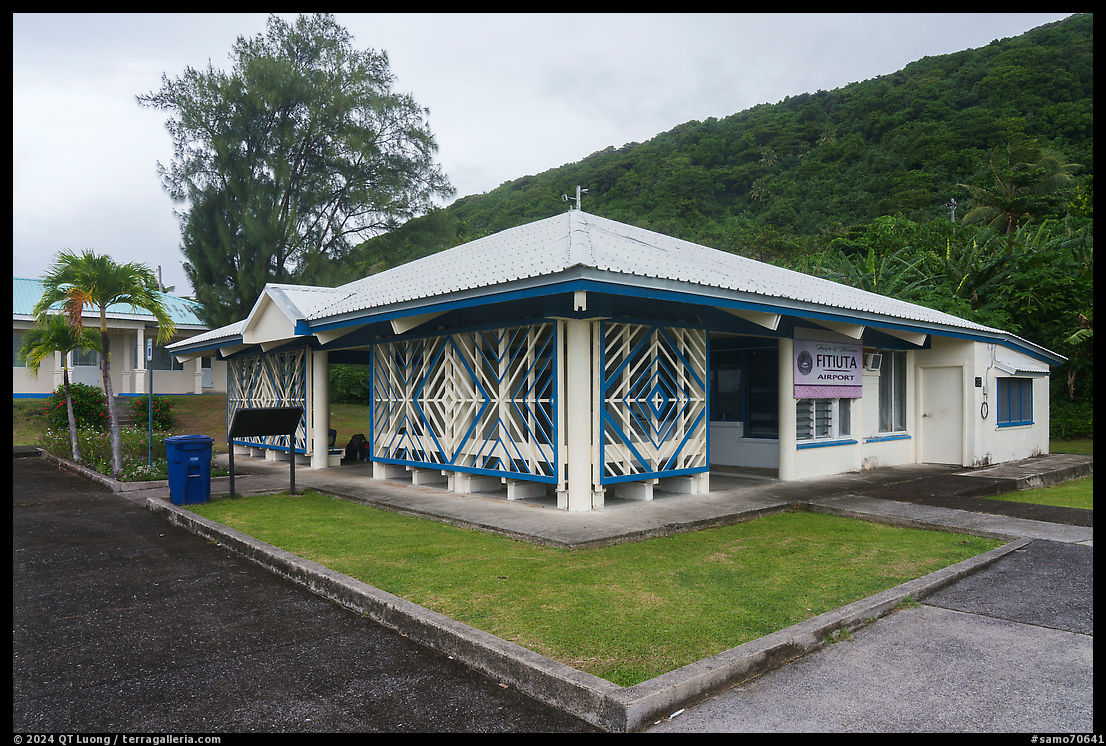
3.3 Riding a small boat (alia) between Ta’u and Ofu
For a decade, taking a local boat from Ta’u was the way to get to Ofu either because of lack of flights or time constraints. Those small boats, locally called alias, are mainly for fishing, with water taxi a secondary activity. As a result, there is no scheduled nor commercial inter-island service. It is about finding and making a deal with local fishermen to get a ride, possibly by just showing up at the pier. Making a reservation can be challenging unless a Samoan person such as your host serves as facilitator. The local travel agency was not able to secure a ride for us. Deb from Va’oto Lodge used to make such arrangements, but recently she declined to do so because she considered alia boats to be unreliable means of transportation and did not want to feel responsible. Reading traveler reports made hiring an alia boat seem routine, but for us it was a challenge. In retrospect, when Deb had mentioned fuel shortages or weather and ocean conditions, she perfectly anticipated the troubles we had. As alia boats are 18-foot vessels not that sea-worthy, if the swell is high, operators won’t risk venturing on the open ocean. The Samoan with whom we traveled had hoped to do the crossing on Friday, but like us was delayed until Wednesday. Despite his extensive connections, he struggled to get timely updates from the boat operator.The rate is in the $100-$200 per person range, but we heard quotes as high as $400. Maybe because we traveled with a local, we were charged the lower end of the range. Payments are cash only. The Manu’a Islands are only 5 miles apart from each other. However, Ta’u Island is located southeast of Ofu Island, and the harbor on Ofu Island is on the northwest side of the island. If ocean conditions dictate a route north of Ofu Island, the boat has to ply 12.5 miles, which takes about an hour. In addition, the harbor is on the west side of Ta’u Island, the Fitiuta airport is on the east side, and there is no public transportation on Ta’u. I found the alia ride to be a fun experience, however, unless one has a very open schedule, I would not rely on it because nowadays there are other options.
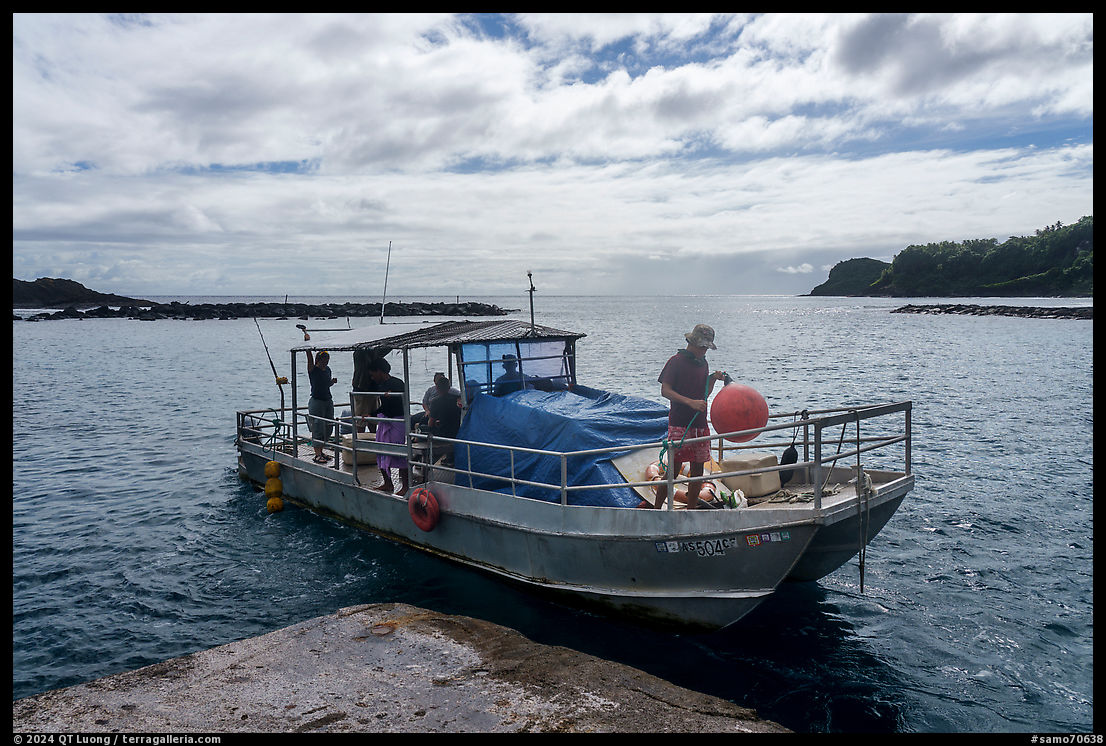
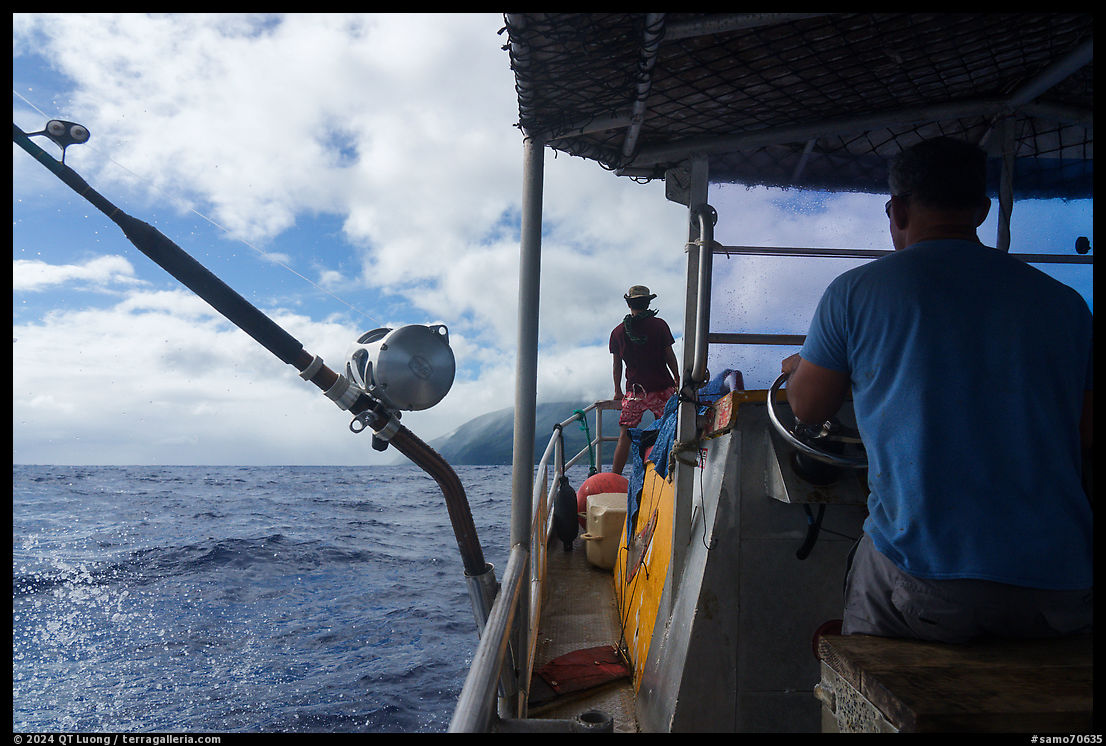
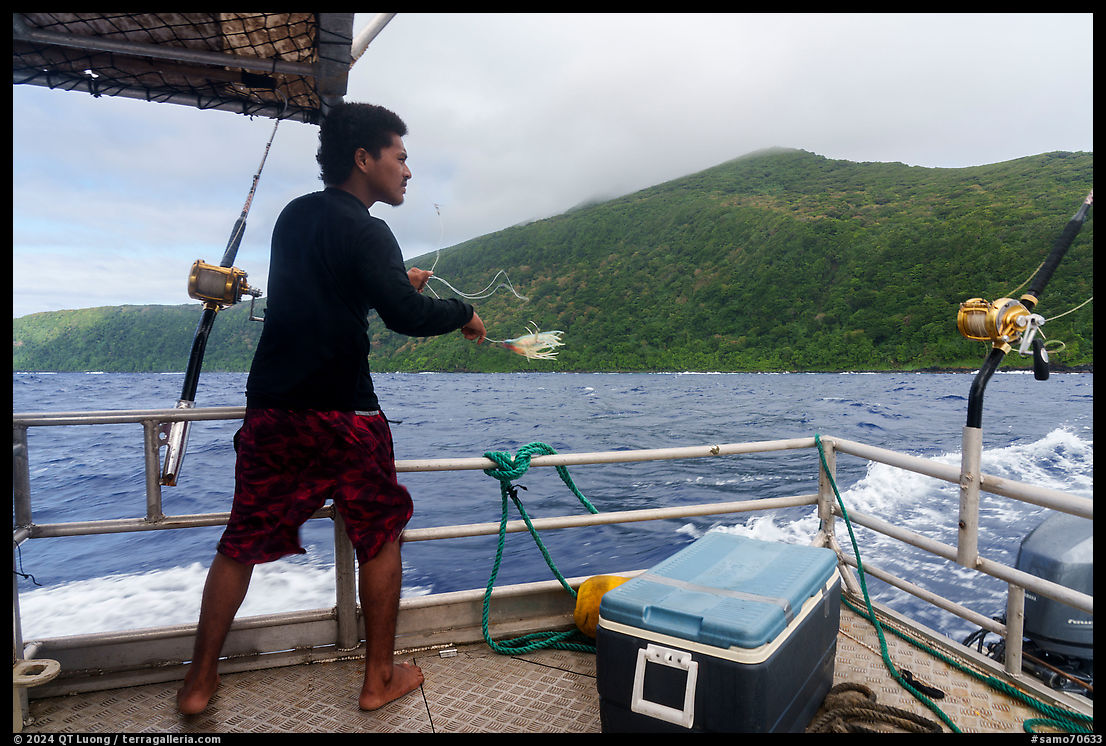
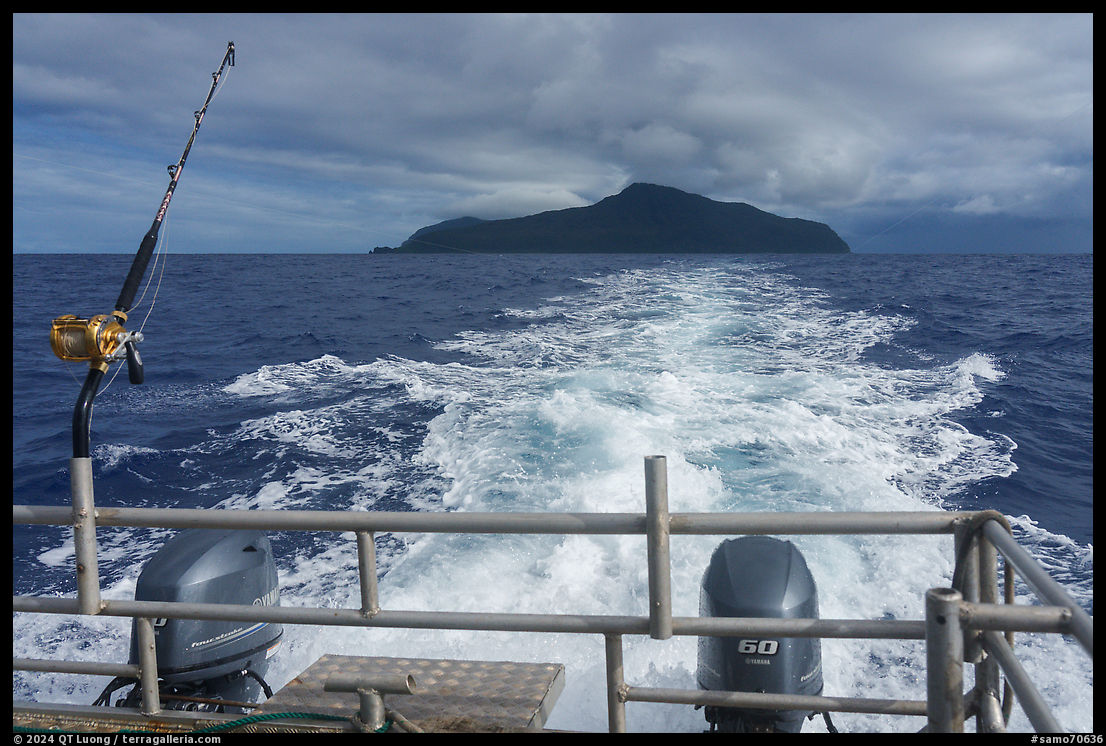
3.4 Riding the cargo boat
The government operates a ferry/barge/cargo boat named MV Manu’atele. It travels every two weeks from Pago-Pago to the Manua Islands. While its primary function is to transport all the imported food and fuel supplies needed for the Manua Islands, it also has seating for 140 passengers. On the plus side, the ride costs only $30 each way, there is plenty of room onboard, and the sailings are not likely to be canceled because of the weather. The main drawback is that the crossing takes about eight hours, plus unloading time if its first stop is not your final destination. There are horror stories about the crossing but it would seem that they date from when it was serviced by the older and slower cargo ship MV Sili. The MV Manu’atele is a more recent boat put in service in 2017 which is said to provide comfortable, dry, and clean seating (no assigned seats) both below and above deck. The boat usually sails from Pago-Pago to Ta’u on Thursday and from Ofu to Pago-Pago on Friday, but this can vary and delays are frequent. If you can plan to be on Ta’u at the right time and the MV Manu’atele runs on schedule, you could ride it Ofu (or sometimes vice-versa) for free.I have no personal experience with the MV Manu’atele other than learning that for unknown reasons, its trip which was supposed to take place the week before our visit was cancelled, resulting in fuel shortages that reduced the availability of alia boats. Reliability is all relative. For more information, look at photos of the MV Manu’atele, refer to the official page from American Samoa’s Department of Port Administration, and contact them via phone or email to obtain schedules.
4. What to bring
As mentioned in my guide to Tuitula, you will need your passport. The most essential thing is plenty of cash (US dollars), since nobody on Ofu is set to process credit cards. My experience suggests that you should bring more than you think you will need in case you are stranded.I would bring snacks to go through the day, and maybe some favorite foods to supplement what is available on the island, especially if you have dietary restrictions. Everything brought to Ofu ends up in a landfill, so to reduce your footprint, bring the least amount of packaging possible.
Beyond that, it all depends on your planned activities, although it would be a pity to come on Ofu and not snorkel. The picture below includes a lot of photography equipment, some of it very specialized. Otherwise, I would have been able to easily travel with a single carry-on bag. On the bench in the background are the bags of my travel companion, who also brought a professional-grade photography kit.
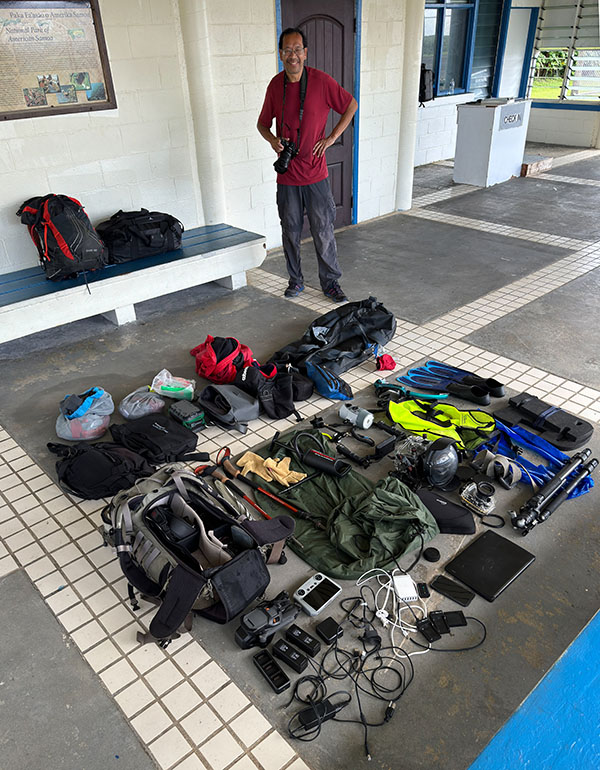
Photo by Tommy Eng
There is no equipment for purchase on the island or outfitters. The Va’oto Lodge has snorkeling gear that you could borrow. However, to ensure a better fit, I recommend you bring your snorkel, mask, fins, beachwear, and maybe a snorkel vest for safety since you may be the only person at the beach. Given the time spent in the water and the intense sun, I prefer a long-sleeved swim shirt and pants. A sun hat covering the neck area is useful.
For hiking the Tumu Mountain Trail, good shoes and socks are a must, and although not necessary, I found hiking poles useful. A pair of sandals to wear at the beach makes it easier to keep your hiking shoes dry and free of sand. Wear long pants since much of the trail is covered with knee-high vegetation, some thorny. In a pinch, you can use water bottles from the place where you are saying, but you may prefer to bring your own. Biting insects did not bother me, but if you are sensitive to them, bring insect repellant.
If you want communications while on Ofu, which were essential for us to receive updates from the boatman, the good news is that 5G coverage is surprisingly good on most of the island, except during heavy rain when all communications are down because they rely on radio signal to Tuitula. However, you will need to buy a SIM card in Tuitula at the office of one of the local mobile carriers which are conveniently across the street from each other. There are two such companies in American Samoa, Bluesky and Astca. Bluesky being private, it makes little economic sense for them to provide coverage for the little populated Manu’a Islands. Astca is government operated like many services in American Samoa. Their service on the Manu’a Islands is generally good. However they seem afflicted by bureaucratic inefficiency: they had no SIM card that works a Motorola phone, and they ran out of eSIMs, something I thought was not possible.
5. Where to stay and eat
There are no resorts, hotels, or campgrounds in Ofu. Camping is prohibited in the national park, so would be on private land and require permission from the landowner or village chief. Accommodations consist of two clean B&B-type accommodations, each located across the road from an excellent swimming beach and near one end of the national park, only a five-minute walk from the park boundary (refer to map in next section). They are open year-round. There are no restaurants or bars in Ofu. A limited selection of groceries, mostly canned or frozen, is available at village stores in Ofu or Olosega. Meals are home-cooked by you or your host.5.1 Va’oto Lodge
Most visitors stay at Vaoto Lodge because of its supremely convenient location, only steps away from the airstrip and about a ten-minute walk to Ofu Beach, and because of its stellar track record. Built in 1979 by Marge and Tito Malae on their family land, the lodge has been around since the earliest days of the national park. They have passed it to their daughter Deb, who currently runs the lodge with her laid-back husband Ben. Both go out of their way to make your stay great. Guests sleep in basic two-room cottages set in a lush garden and have access to a spacious communal building including a large kitchen and dining room, library, TV, and Wifi, giving the place the feeling of a homey hostel. In 2024, the rate was $130/night per room (two persons). Our room had AC, but hot water was rarely available. Marge, who has passed away, used to cook, but you now have to prepare your meals. However, you do not need to shop for groceries because Ben conveniently stocks up an abundant self-serve pantry with several fridges and freezers. You record in a register which items you use, and they get added to your final bill. Ben also offered us free freshly baked pizza and foccacia. For transportation, guests can choose from a dozen bicycles to borrow. However, as the mountain bikes needed some tuning up, the cruiser bikes were a better choice even though at least one section of the road requires pushing. In addition, Ben let us borrow his truck and on occasion gave us rides. Contact the lodge at their Gmail account vaotolodge.
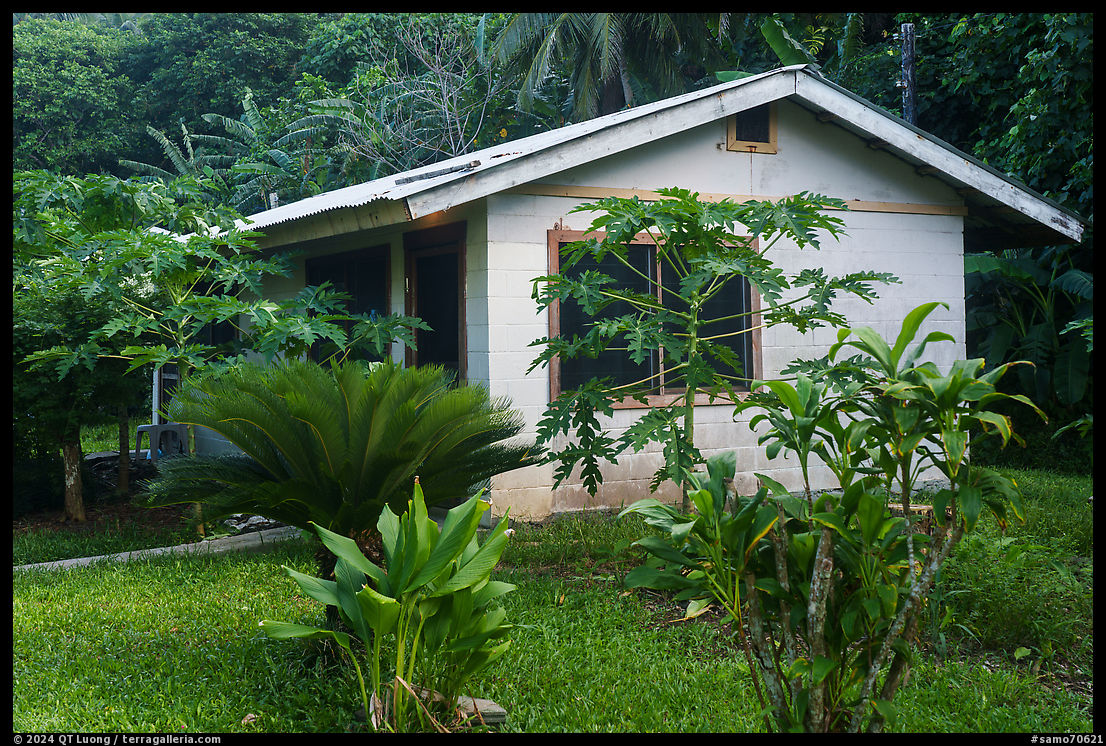
5.2 Asaga Inn
The out-of-the-beaten path alternative is Asaga Inn. When I was there, it was ran by Celesty and her husband Ramond, both accommodating and friendly, but I’ve been told in August 2024 that they are moving back to the U.S. mainland. Its excellent location, steps away from the Ofu-Olosega bridge makes it a good base for exploring Olosega Island and the eastern part of Ofu Island on foot. The walk to Ofu Beach is about twenty minutes, and to get to the inn from the airport, which is three miles away, the hosts can arrange a ride. The rooms, which have two queen-size beds, AC, a mini fridge, and Wifi, are all located inside the main building and are much more spacious than the Vaoto Lodge’s rooms. In 2024, the rate was $150/night for one and $195/night for two, with meals included. Use of the kitchen incurs a surcharge. Contact information for Asaga Inn is listed on their Facebook page.
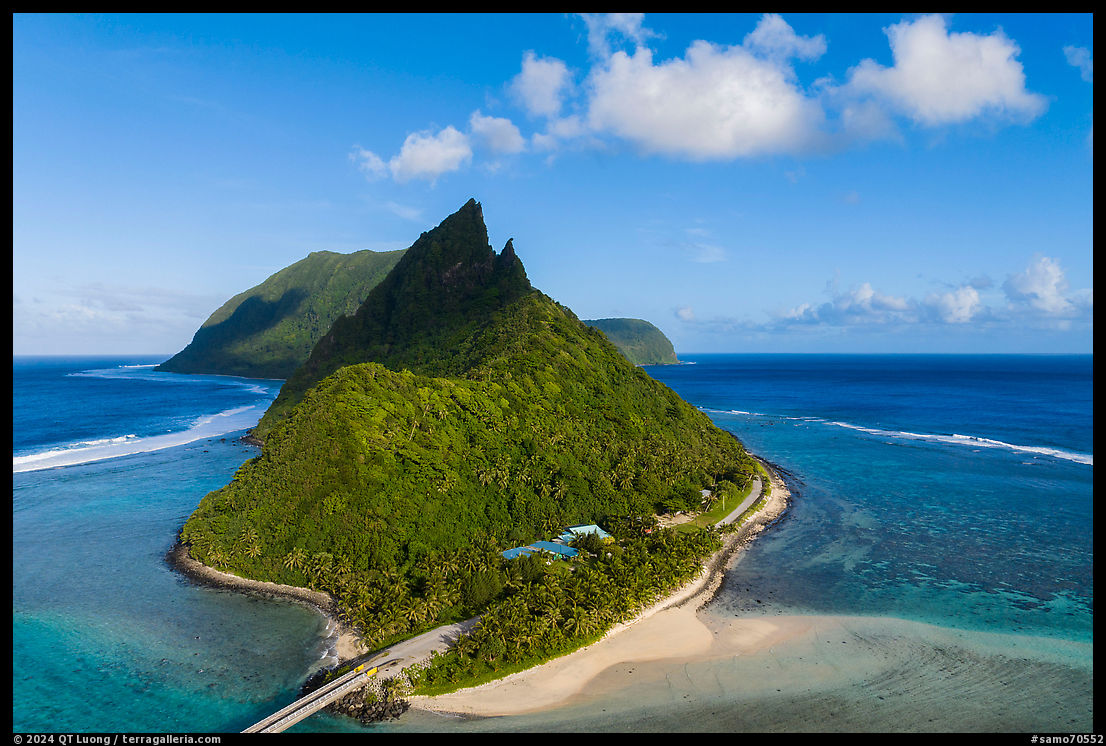
5.3 Homestay
Besides nature conservation, one of the reasons the National Park of American Samoa was established is to preserve the traditional Samoan way of life. The homestay program in the National Park of American Samoa is unique due to its deep cultural immersion and authentic experiences that go beyond typical tourist activities. Participants live with local Samoan families, allowing them to engage intimately with traditional practices, customs, and daily life. In Ofu, I stayed only at the two places described above, however I participated in a homestay on Ta’u and enjoyed the experience very much. Naturally, the program was suspended during the COVID pandemic, but you can inquire about its current status with the park visitor center.
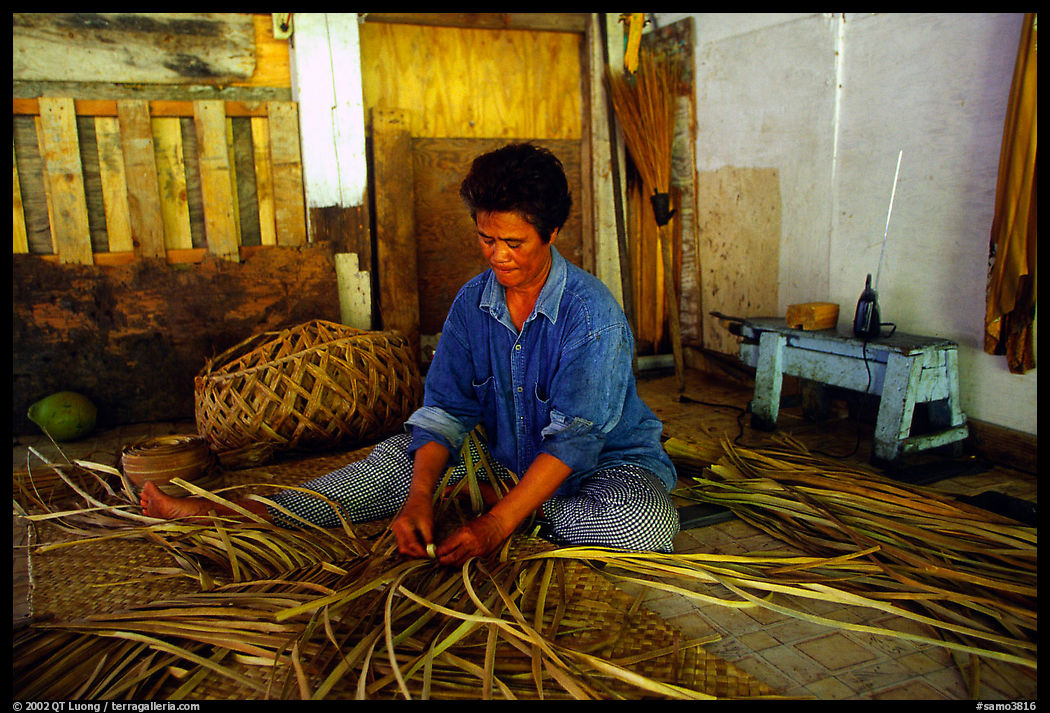
6. What to do
It is a good time to mention that in American Samoa, most leisure activities are prohibited on Sundays due to the strong cultural and religious traditions of the territory. The majority of the population follows Christianity, and Sunday is considered a day of rest and worship. This sabbath, rooted in Samoan culture and reinforced by church teachings, emphasizes family time, spiritual reflection, and attending church services. As a result, businesses close, public gatherings are minimal, and recreational activities are restricted to preserve the sanctity of the day. If you are lucky, you may be invited to join a Toona’i (traditional Sunday lunch). On Sundays, all privately owned beaches are closed. However, Ofu Beach, being leased to the National Park Service, is exempt from the rule. The Tumu Mountain Trail is also closed, and hiking it is doubly offensive because climbing the island’s mountains on Sunday is considered disrespectful. I read that in 2017, a pair of Australian women went hiking on a Sunday and ended up lost on the mountain, requiring a massive rescue.
Blue square: recommended swimming location on Ofu Beach
Red triangle: main rip current on Ofu Beach
Green area: National Park of American Samoa
Orange line: GPS track for Tumu Mountain trail
(click on map for larger version)
6.1 Ofu Beach
The Ofu Unit of the National Park of American Samoa consists mostly of the two-mile-long Ofu Beach, on the south shore of Ofu Island. The palm-lined, sandy beach occasionally appears on lists of the world’s best beaches, but what makes it special is that your probability of having the entire beach to yourself and not seeing any single footprints is high. It is visited by fewer than a few hundred tourists a year, and the locals avoid it because they believe it to be haunted.
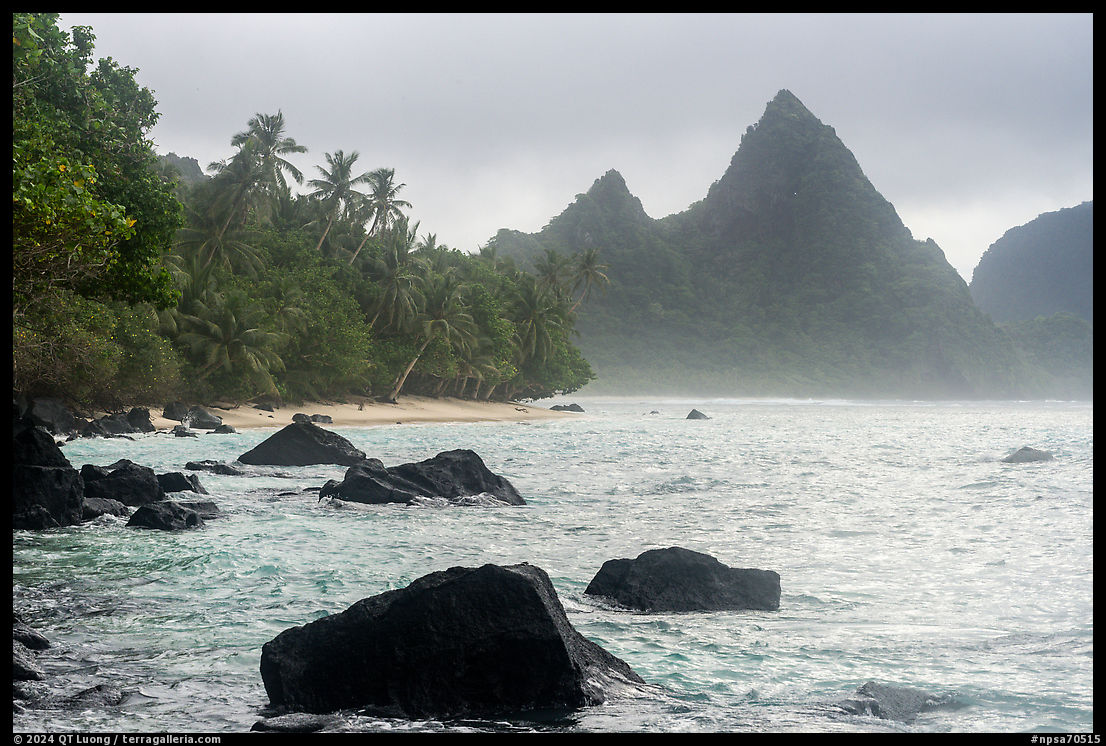
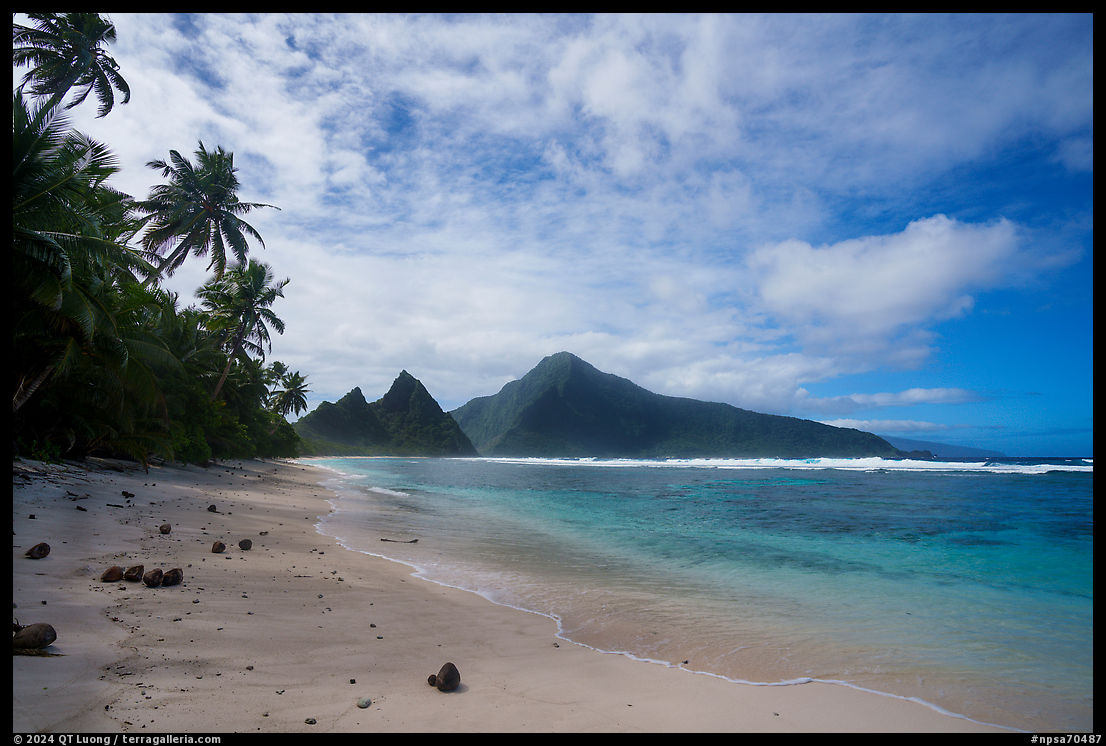
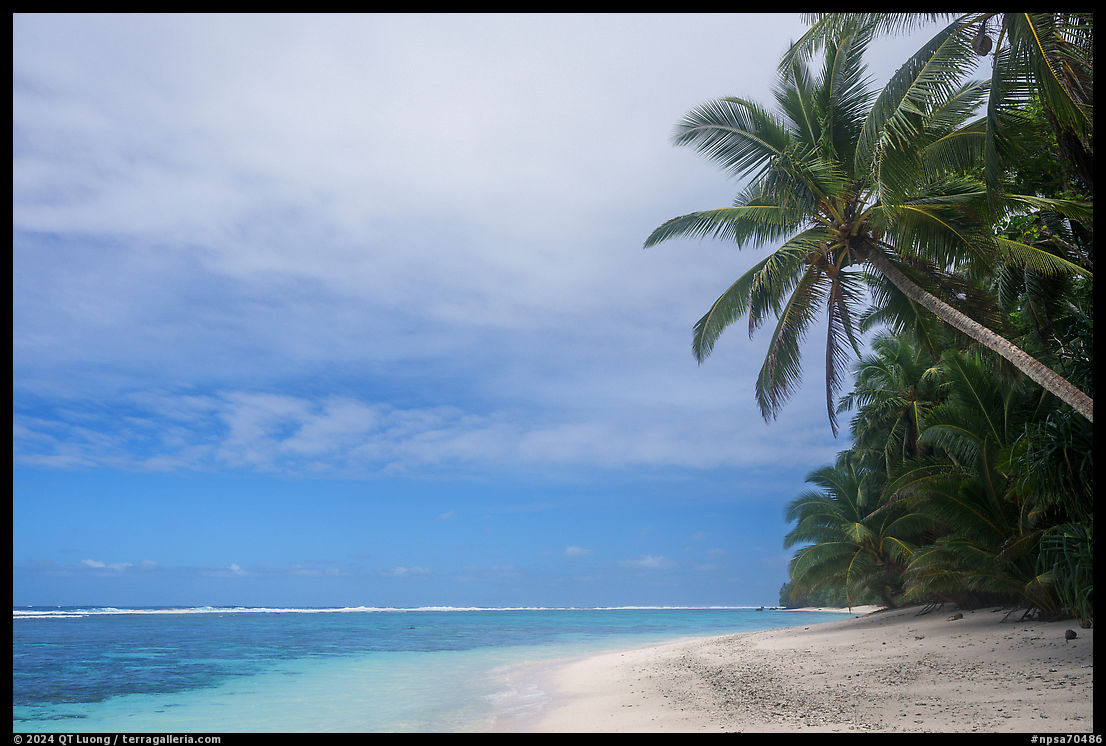
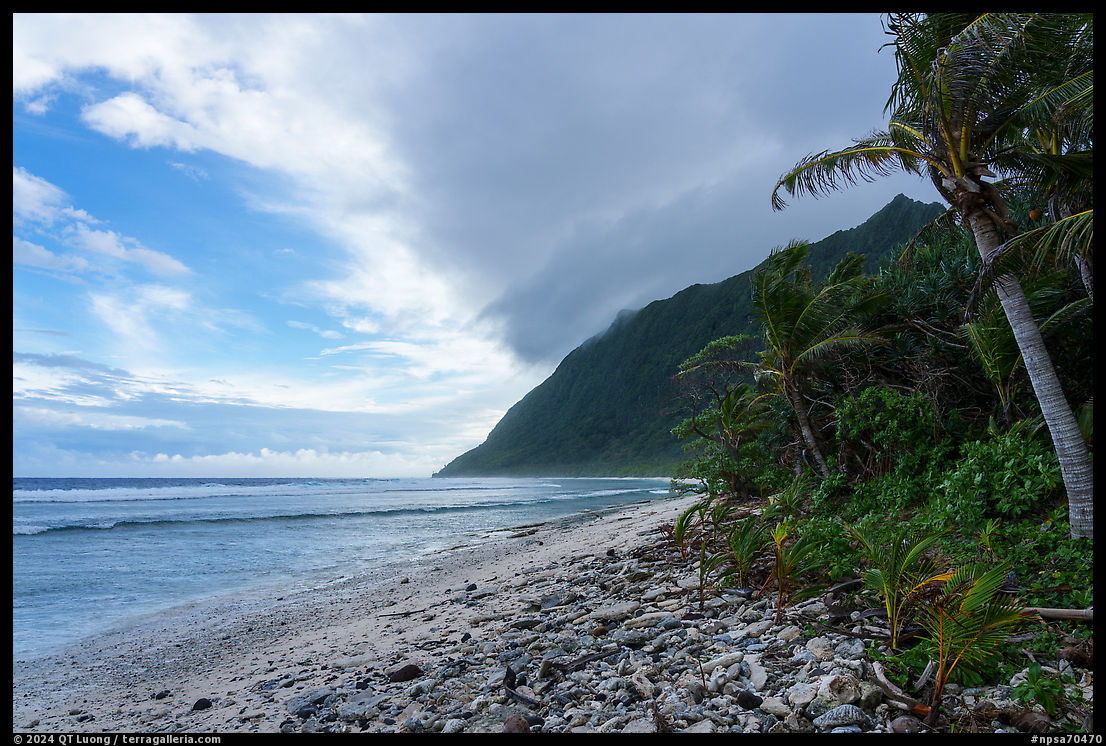
The primary activity in the Ofu Unit of the National Park of American Samoa is beachgoing. The water temperature is in the low 80s. Given the tropical weather, water-based activities are more pleasant and attractive than land-based activities, which goes a long way in explaining why travelers’ favorite experiences in the National Park of American Samoa are in Ofu.
Ofu Beach wouldn’t be that great without its fringing To’aga lagoon. Not only it intercepts the brunt of the surf, creating a sheltered space for swimming, but it also is home to an exceptionally beautiful reef teeming with 150 species of coral and almost 300 species of tropical fish. After being damaged by the 2009 tsunami, the reef has recovered and continues to thrive even though at low tide, the water heats up significantly. Thanks to its National Park status, Ofu Beach is protected and mostly undisturbed. Scientists have extensively studied it, hoping to learn how the Ofu reef manages to thrive in such warm water, which may hold clues for how to help other reefs stay healthy in a world that is heating up. A Samoan man who now lives in Hawaii told me that in his view, Ofu Beach has the best snorkeling in the world. At low tide, corals are just a few feet under the surface.
Ofu Beach starts a third of a mile from the Va’oto Lodge, but at that point the lagoon is narrow, resulting in rough waters. The safest place for snorkeling is where the lagoon is the widest, which corresponds roughly to the middle of the beach, about a mile from the Va’oto Lodge. That point was easily located in 2024 by a clearing with a construction site on the north side of the road and a footpath with a sheltered picnic table on its south side. You should be aware that northeast about a third of a mile from that location, you will run into Ofu Beach’s main rip current, which is visible on the satellite view and also on my photo from Tumu Mountain. A warning sign marked a nearby beach access. There are no lifeguards on duty!

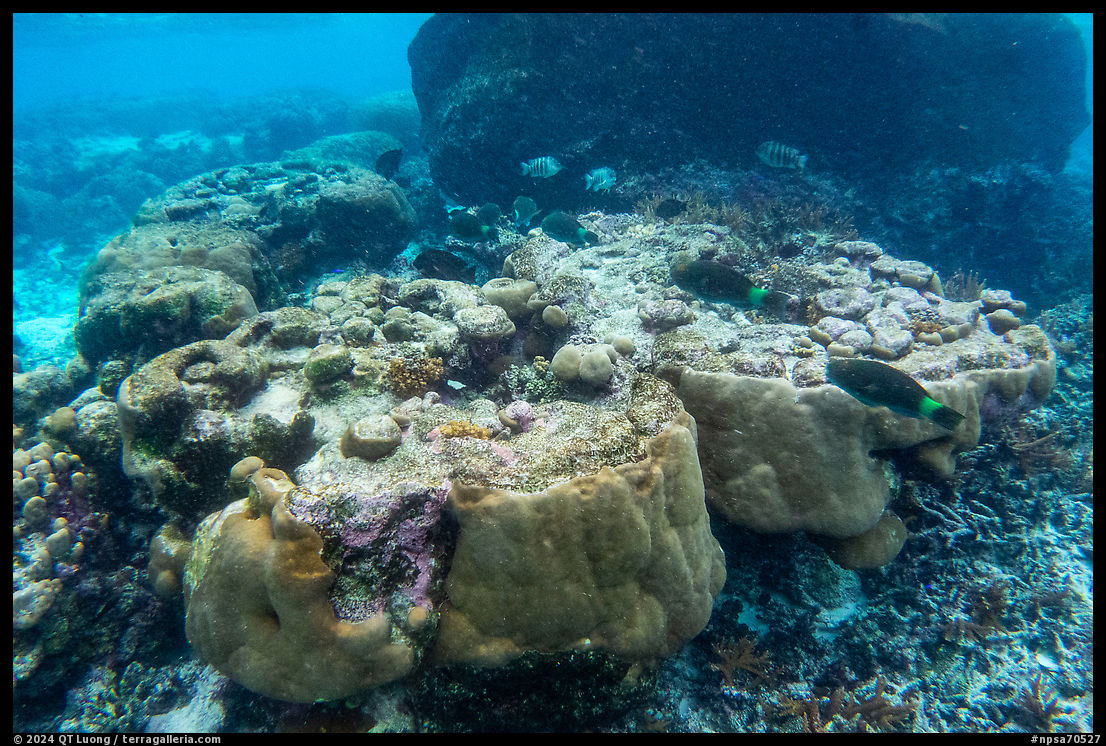
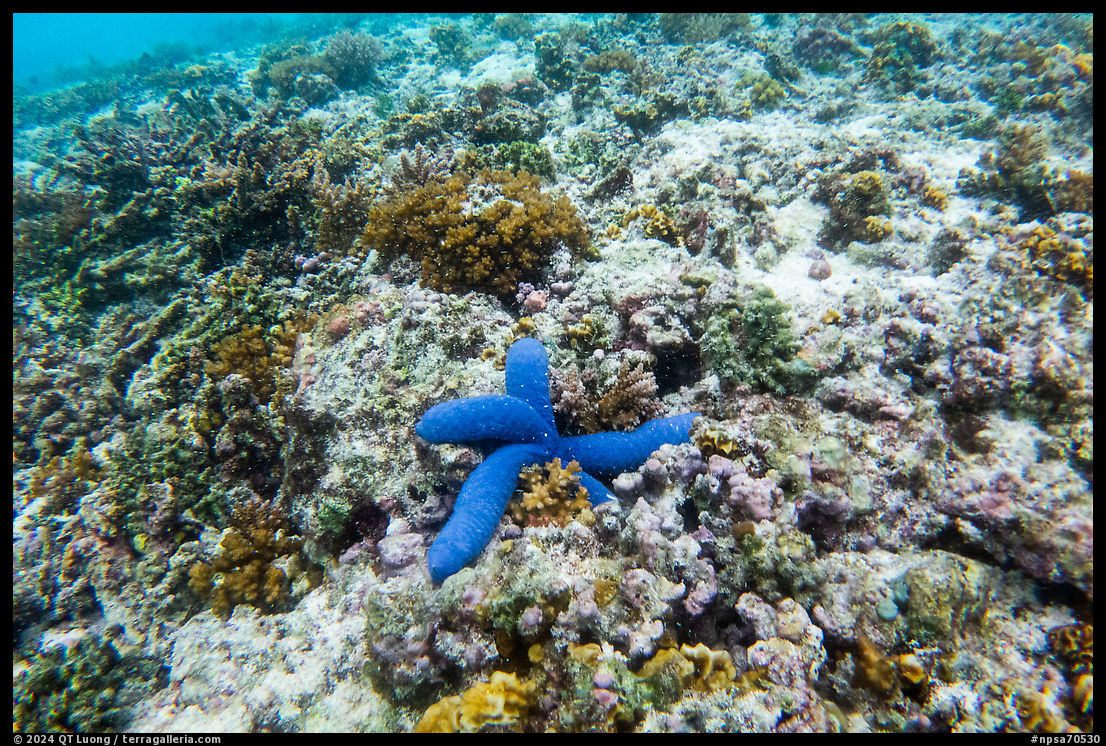
6.2 Tumu Mountain
Tumu Mountain (also Mount Tumutumu) at 1,621 feet is the highest point on Ofu. The 5.5-mile (roundtrip) hike takes place in a rainforest that becomes increasingly lusher with elevation and leads to one of the best viewpoints in the South Pacific. The Va’oto Lodge’s library included an independently published travel guide to American Samoa that rated it as the best hike in the entire territory. The trail was initially a jeep road built to service the radio tower on the top of Tumu Mountain, but since then sections have become overgrown. Yet the NPS-maintained trail is well-graded and generally easy to follow. The summit of Tumu Mountain proper is forested with no views, however, a more recent trail extension leads to the Tumu Mountain Overlook, which rewards the hiker with a fantastic bird-eye view of Ofu, Olosega, and Ta’u in the distance – see also the opening photo.
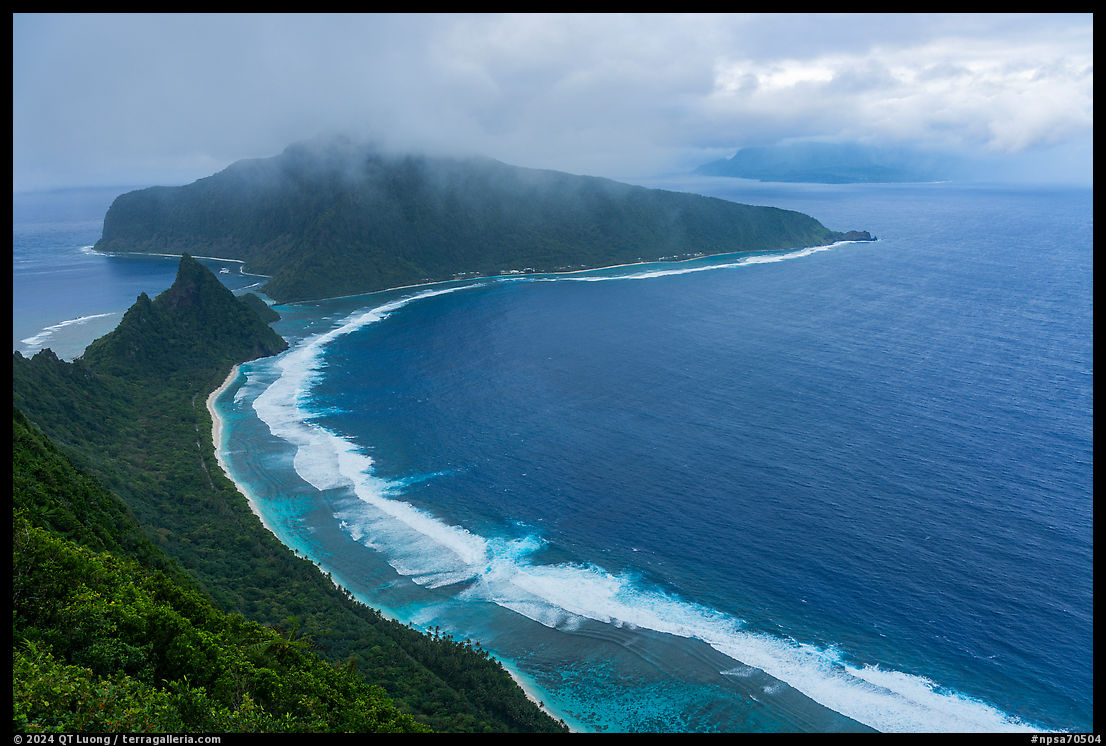
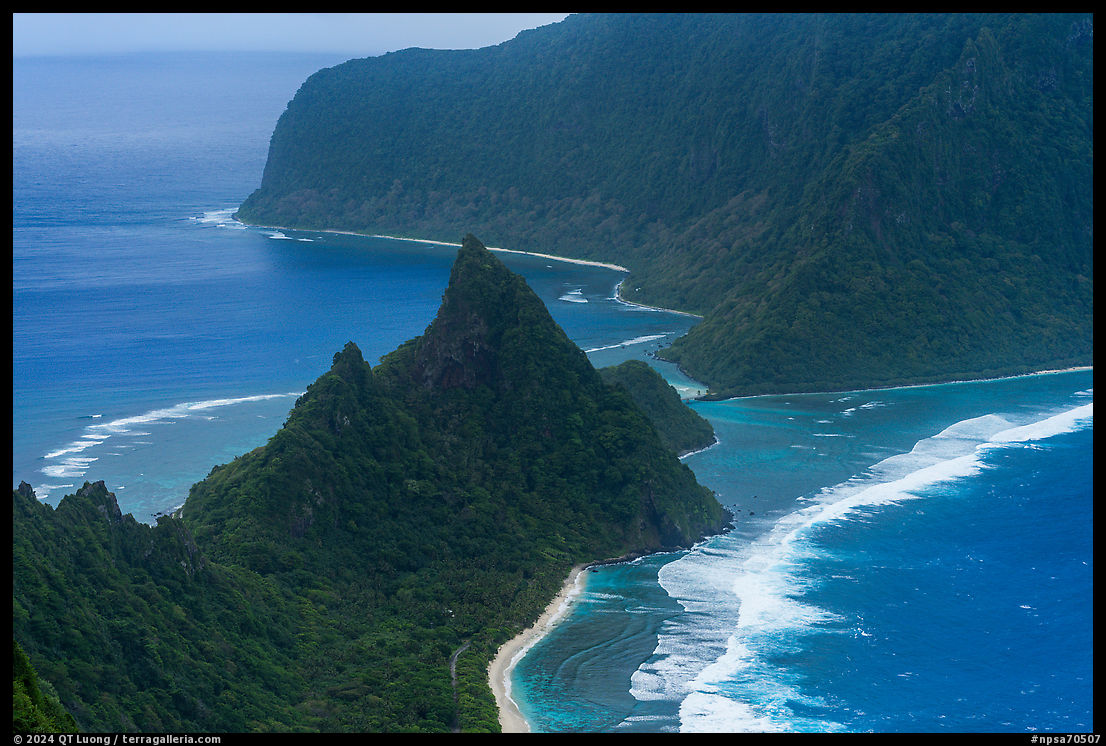
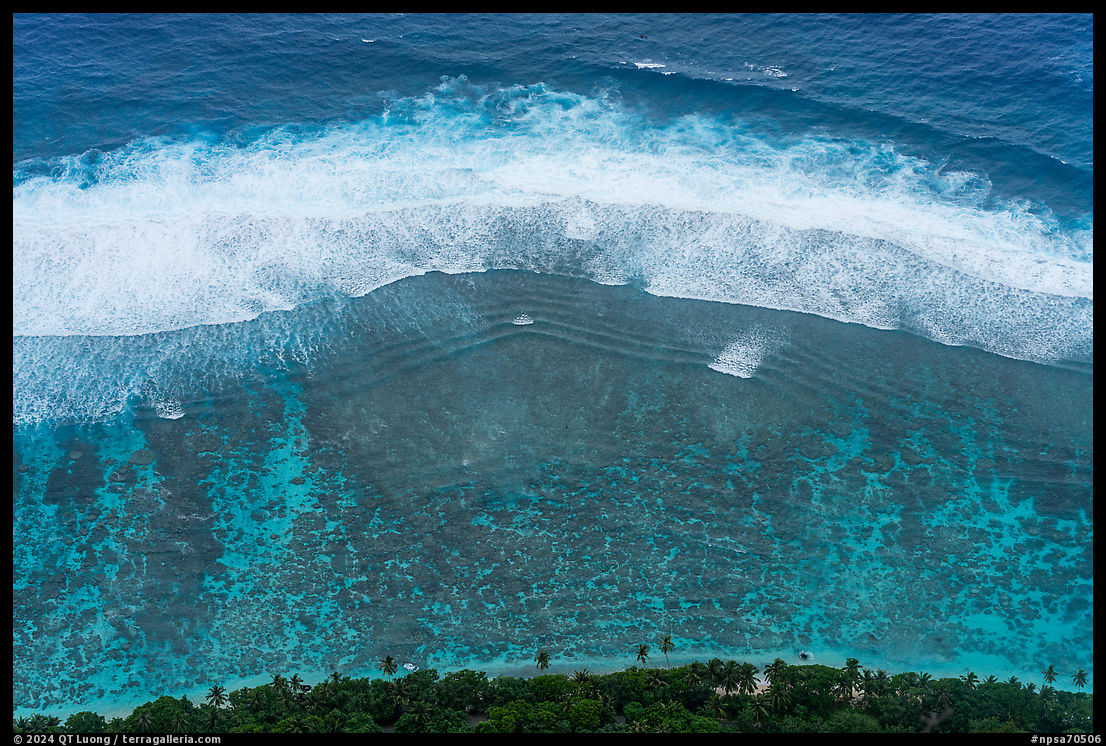
The starting point for the hike is the end of the road at the northwestern tip of Ofu past the pier and is at sea level. Ben recommended not getting there on foot or bike due to aggressive dogs in the village, but instead getting a ride. The first part of the trail follows southeast a wide 4WD road bordered by coconut and palm trees past the Ofu Solar Park. In 2017, it provided 80% of the island’s electricity, while the goal of 100% solar energy was already attained on Ta’u Island. The second section, starting with a left turn marked by a trail sign, is on a narrower road heading north blocked by a few fallen trees until a sharp right turn. The third section climbs the Mako Ridge, heading southeast with a few views towards the island’s northeast. I often needed to duck below branches, and for a few passages, to carry my backpack by hand. In the middle, there is a brief moment where the trail is not obvious as everything is covered by a layer of greenery, otherwise, it is not difficult to follow.
The critical junction at 1,500 ft elevation (-14.17515, -169.65993) was marked only with a ribbon of pink tape. The Tumu Mountain Overlook extension heads to the left, while the trail to the summit continues straight. No worries if like me, you missed the junction. When you see the radio tower, turn around and you will find it in minutes. On the Internet, several write-ups including the one from the National Park Service mention getting to an overlook from the summit.
From the top, continue another 0.25 mi / 0.4 km on the new Tumu Mountain Trail extension to a rock outcropping on the Leolo Ridge with stunning views of three Manu’a islands and the coral lagoons in the national park.However, given the configuration of the terrain, this sounds implausible unless it is a different overlook or they have a vague definition of the “top”. From the junction, a rough and faint user trail passes a fixed rope just before the overlook, a small area with a bench and sheer cliff drops below you. It took me two hours and a half to get there, including backtracking from the radio tower and taking photos. I stayed for about half an hour, at which point clouds moved in. Conversely, if when you get there, clouds obscure the views, hang on for a while, as the weather can change quickly.

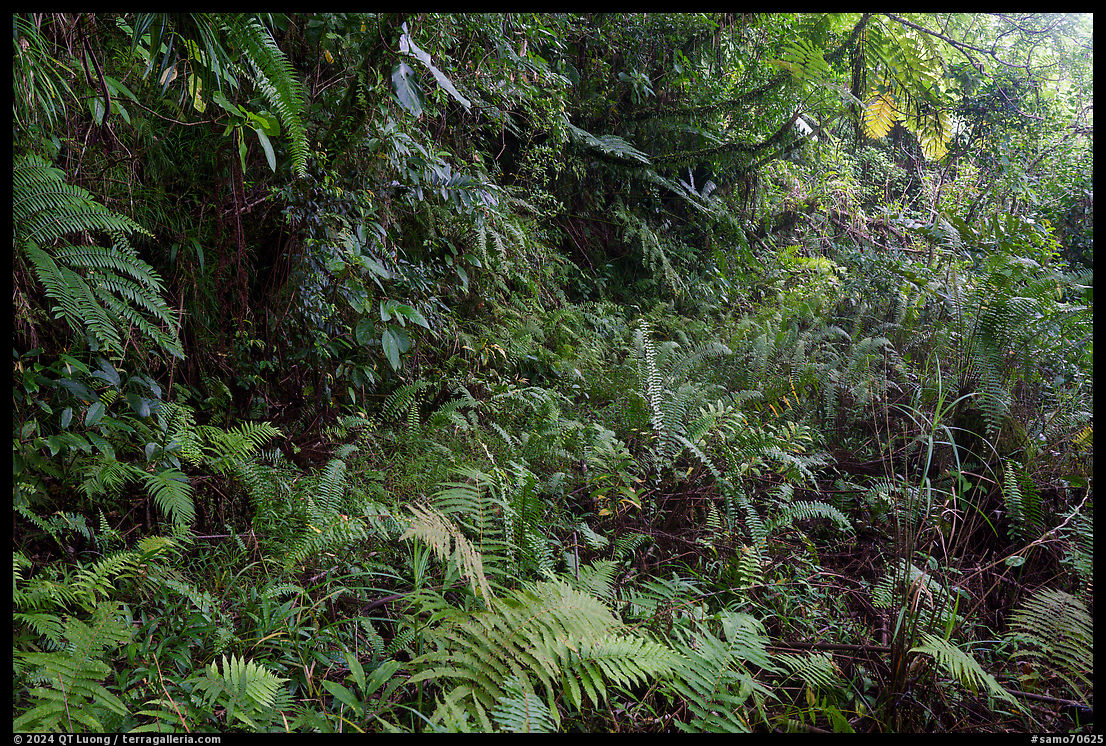
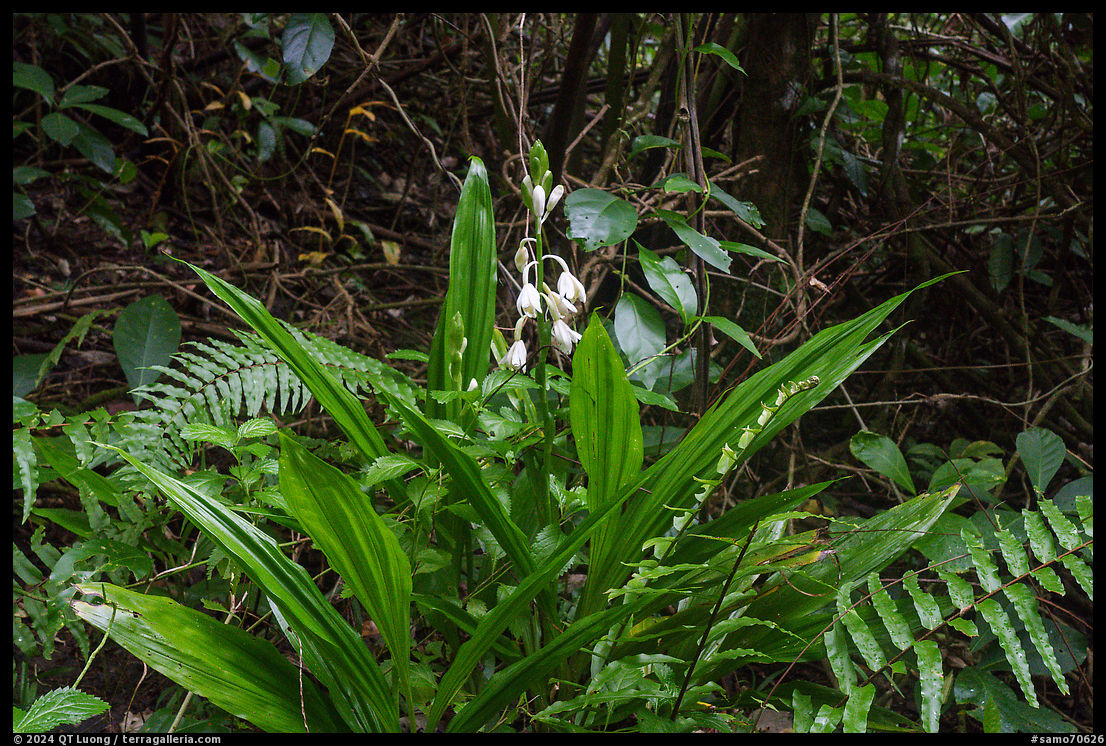
If you start early in the day, temperatures are cooler, however, in the morning the view is backlit. The trail is mostly shaded, but on a sunny day, you would want sun protection for the first part. Bring snacks and plenty of water. Even hiking on a cloudy afternoon and a rainy evening, I was quickly drenched in sweat and would drink almost three quarts. gaiagps.com’s default map has the junction correctly marked, and you can view and downland my GPS track. If you use alltrails.com, the current version of their track has been corrected and is now accurate.
6.3 Other Activities
Because of the rarity of visitors, interaction with the park ranger was personal and rewarding. However, at the time of writing (2024), the Ofu Ranger station, which is located steps away from the airport and the Va’oto Lodge, was closed and no ranger stationed on Ofu. If you are looking for the “National Park of American Samoa, Manua Islands, AS” stamp, it was kept in the kitchen of Va’oto Lodge but is beat up with a degraded impression and the latest year available is 2023.
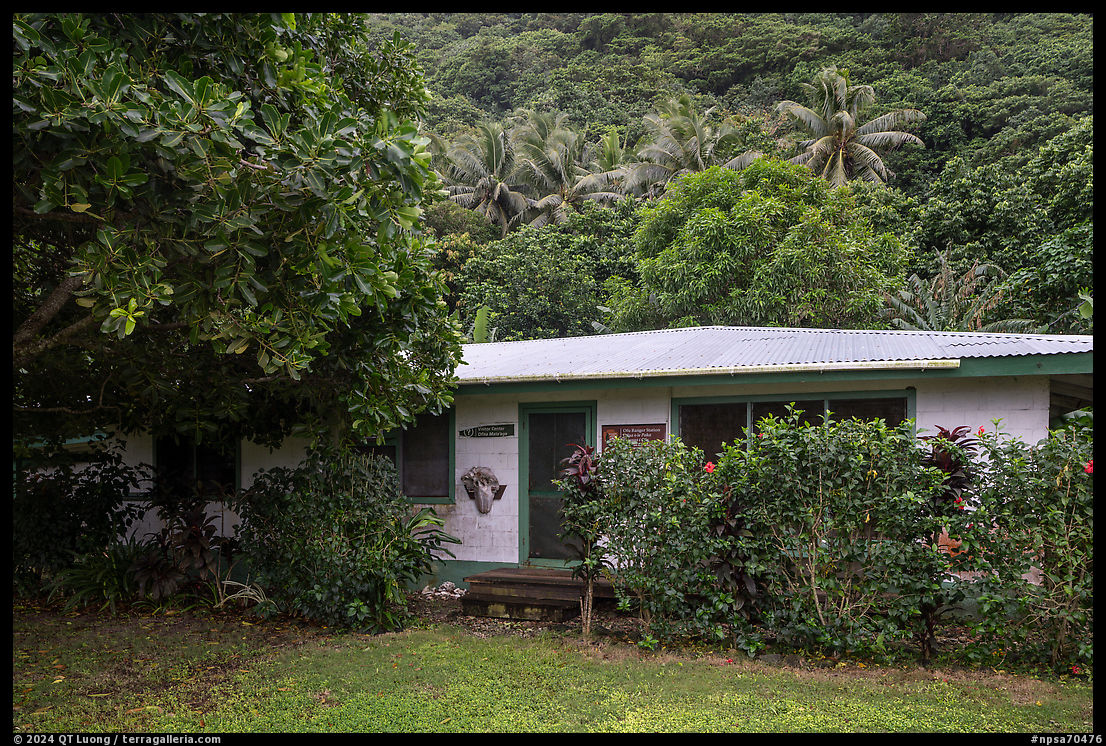
Ofu has no public transportation, taxis, or car rentals, however given its size of three miles long, it is an easy matter to bike or ride in the back of a truck on the entire island road. Its western end, the Tumu Mountain trailhead, is separated from its eastern end, the Ofu-Olosega Bridge by less than five miles. Coves and sea stacks offshore from Ofu Village are picturesque. Next to Ofu airport, the Va’oto Marsh is a small wetland frequented by uncommon birds. You can try to spot fruit bats, the only mammal native to Samoa, in trees along the road. In front of the Asaga Inn, a sandy beach can have calmer water than Ofu Beach owing to its north shore location. The smaller Olosega Island is joined to Ofu Island by the one-lane Ofu-Olosega Bridge over the 450-foot Asaga Strait. If you find the reef shallow for swimming, you will appreciate the deeper waters below the bridge. Some visitors like to jump from it at high tide. At low tide, you can walk from an island to the other, which is what villagers did before the bridge was built in 1970.

To free-dive in even deeper water, check out the north shore of Olosega Island near the abandoned village of Sili, where the reef drops off dramatically into oceanic depths. The Oge Beach Trail (2.7 miles round-trip, 400 elevation gain) starting at the end of Olosega Village road near the landfill climbs up the side of Mata’ala Ridge for great open views and descends steeply to the isolated coral rubble Oge Beach. It is said to be excellent for wildlife watching, including boobies and frigate birds. Permission from Olosega village is required. A spur trail more overgrown and rough than the Tumu Mountain Trail leads to the summit of Piumafua Mountain (2,063 feet), the high point of Olosega island. After two hikers needed a rescue in 2017 and failed to show proper gratitude, the village stopped permissions for that trail. I do not know its current status.

If you find that the sunset time of 6 pm is early, consider night activities, which will be nature-based since there is no entertainment on the island. Due to its isolation, the skies are some of the darkest and clearest. When you photograph from Ofu Beach towards the iconic mountains in the east, the lights of Olosega village intrude. For this reason, my favorite location for night photography is the Ofu-Olosega Bridge. The night is also a great time to spot the island’s coconut crabs.
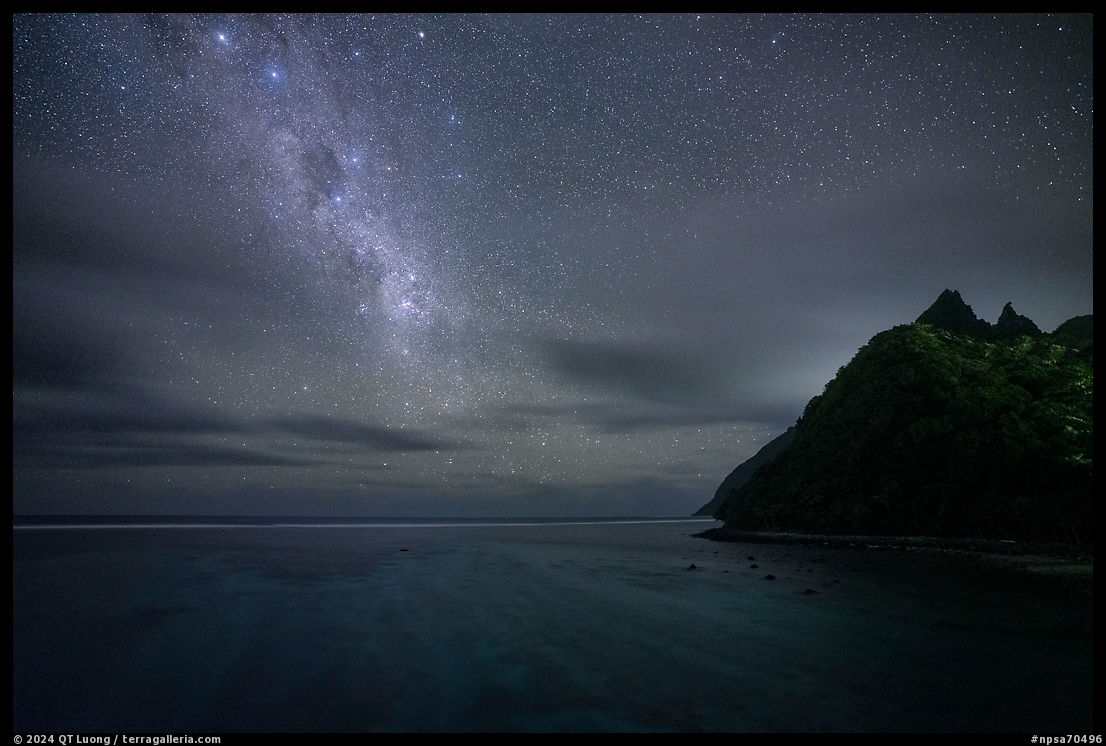
Whether you choose to be active by day and night or to relax, just being on Ofu is a privilege – even when things do not go according to plan in this adventurous destination. For a narrative of how my latest week on Ofu unfolded, read my Ofu travel story. You can also look at all my photos of the National Park of American Samoa.
Part 3 of 5: 1 | 2 | 3 | 4 | 5
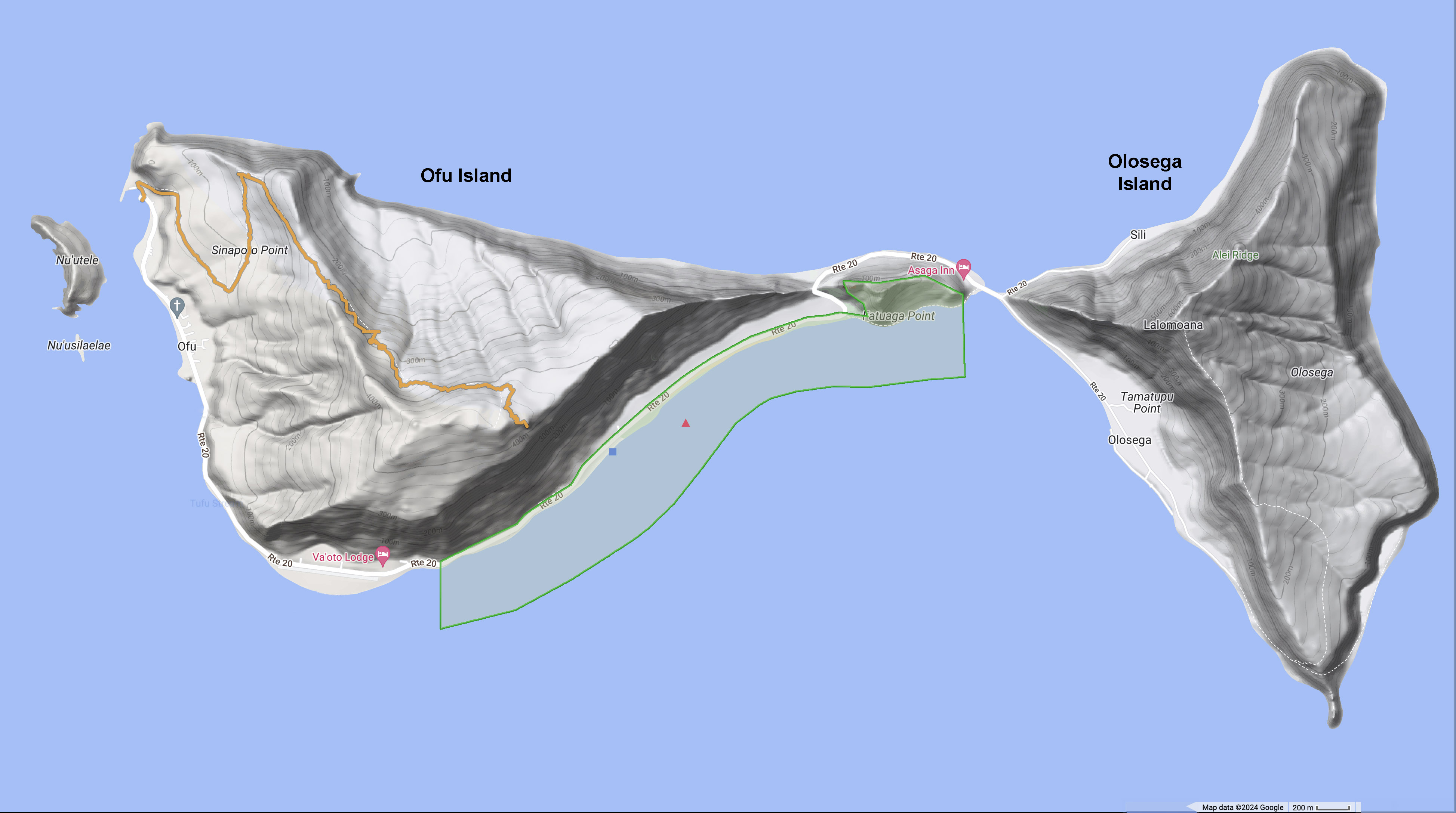


This is amazing and so informative! Thank you!!
What is controversial about Polynesian Airlines being renamed Samoa Airways?
My husband and I traveled to American Samoa in 2019 with the NPCA. We visited all 3 parts of the National Park. We agree that Ofu beach was the most pristine and absolutely stunning coral reef we’ve ever seen and snorkeled. Thanks for sharing your trip! It brought back wonderful memories.
Forgot to include my travel story:
https://lindawebsterphotography.com/national-park-of-american-samoa/
This was so informative and I enjoyed reading it.
Thankyou for sharing such valuable information with us.